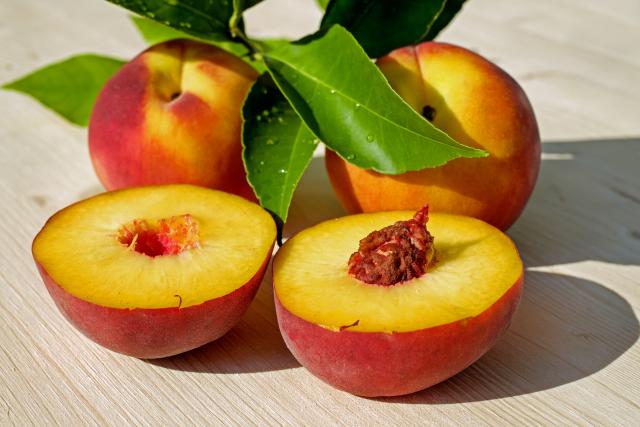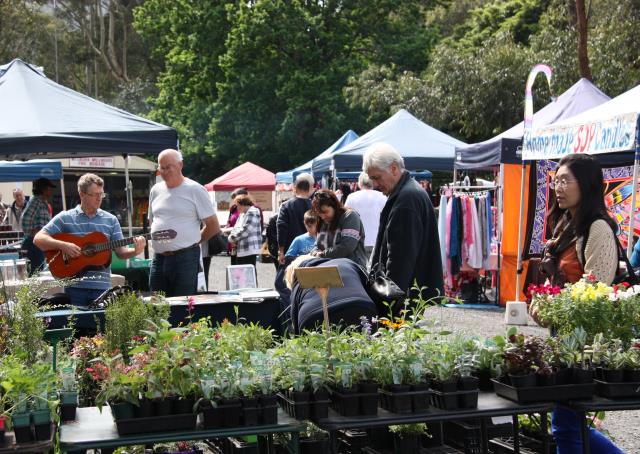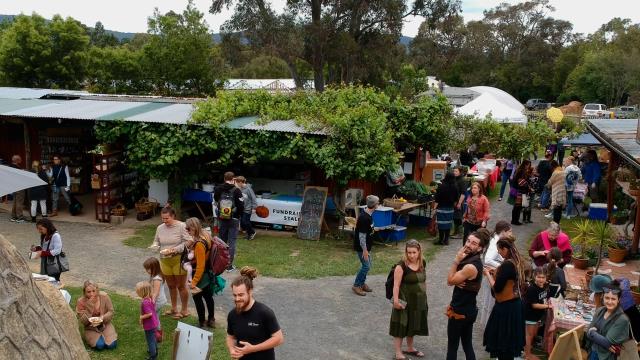‘An apple is an excellent thing—until you have tried a peach’. George du Maurie
Anyone who has bitten into a just-picked peach, warmed by the sun and ripe enough to be eaten straight away would be in total agreement with Punch cartoonist George du Maurier that peaches are the near perfect fruit, celebrated in literature, art and folklore.
A ready to eat peach should be fragrant and juicy with just the right amount of sweetness and should yield to gentle pressure. Its colouring should be a combination of red golden yellow and blush pink.
But walk into any major supermarket at the height of stone fruit season and you’ll not experience that heady aroma which some may remember from childhood visits to the local fruiterer, or from a bowl of just picked backyard grown fruit .Or fruit stolen from a nearby orchard!
Commercially grown peaches are generally not ready for eating straightway, and often fail to ripen, remaining acidic, lacking the flavour this ancient fruit promises and often softening to an inedible brown and mealy consistency.
Speaking to Rad from Rayners Stone Fruit Orchard, he was adamant that the reason fruit from big retailers disappoints was that it’s picked too early. A long shelf life does not suit stone fruit. Although peaches and nectarine (a variety of peaches) do soften and become juicier and more aromatic after harvest, they don’t get any sweeter. That requires picking the fruit at the highest possible maturity.
The number of orchards around Melbourne have been drastically reduced and that is particularly so for stone fruits. The famous food bowl that encircled Melbourne and allowed the city to have easy access to freshly grown produce is now part of the urban sprawl. We have to rely on food grown further and further away and therefore picked too early and often stored incorrectly.
Whether it is seen as a fruit of the gods or as a symbol of love and eroticism, the peach continues to hold a special place in the cultural and religious traditions of many cultures around the world, representing longevity, immortality, fertility, and prosperity.
The voluptuousness of the peach also lends itself in art and literature to being a symbol of eroticism and the bountiful harvest and abundance of nature. English Romantic poet John Keats wrote provocatively how he experienced eating a peach while writing (presumably poetry): ‘talking of Pleasure, this moment I was writing with one hand, and with the other holding to my Mouth a Nectarine, good God how fine. It went down soft, pulpy, slushy, oozy all its delicious embonpoint melted down my throat like a large beatified Strawberry.’
Embonpoint being the plump or fleshy part of a person’s body, particularly a woman’s breast.
With the rise of social media and the advent of emojis, the peach emoji is a symbol of the buttocks or a playful reference to sexuality.
And since peaches are most delicious when ripe and freshly picked, they are linked to an ideal of beauty and youth. To this day, youth is still one of the most appealing traits in a person, and peaches as they lose their freshness, and their downy skin wrinkles remind us that youth, so wonderful, is yet so fleeting.
D H Lawrence considers the peach from the stage of “silvery peach blossoms’ in a wine glass to a mature peach just before he eats it and marvels at it being so ‘velvety’ and ‘voluptuous heavy’ with its ‘lovely, bivalve roundnesses’ and wonders ‘Why so indented? And not ‘round and finished like a billiard ball?’ It puzzles him how this ‘rolling, dropping heavy globule’ evolved from the blossom to what it is.
But nature is not perfect in its multitude of variations, unlike something man made and that’s the wonder of it.
Peach
by D. H. Lawrence
WOULD you like to throw a stone at me?
Here, take all that’s left of my peach.
Blood-red, deep;
Heaven knows how it came to pass.
Somebody’s pound of flesh rendered up.
Wrinkled with secrets?
And hard with the intention to keep them.
Why, from silvery peach-bloom,
From that shallow-silvery wine-glass on a short stem
This rolling, dropping, heavy globule?
I am thinking, of course, of the peach before I ate it.
Why so velvety, why so voluptuous heavy?
Why hanging with such inordinate weight?
Why so indented?
Why the groove?
Why the lovely, bivalve roundnesses?
Why the ripple down the sphere?
Why the suggestion of incision?
Why was not my peach round and finished like a billiard
ball?
It would have been if man had made it.
Though I’ve eaten it now.
But it wasn’t round and finished like a billiard ball.
And because I say so, you would like to throw something
at me.
Here, you can have my peach stone.







